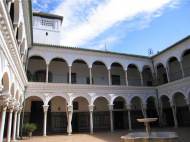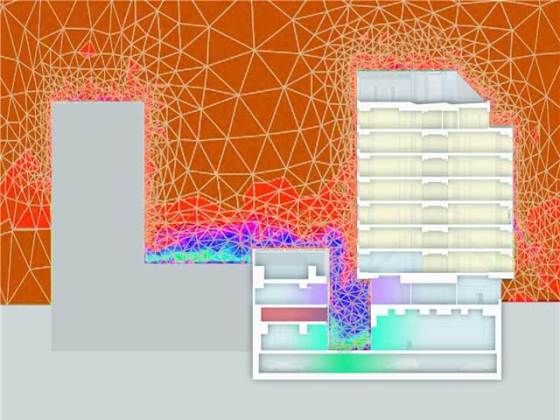Using math tools to improve energy efficiency of courtyards
 While some may wonder how our ancestors managed to realize similar solutions in architecture throughout the different cultures around the world, researchers from the University of Seville (Spain) propose that climate played a major role in that process. They also used mathematical tools to reveal the phenomenon that the temperature inside the typical Mediterranean courtyard is cooler than that of the street.
While some may wonder how our ancestors managed to realize similar solutions in architecture throughout the different cultures around the world, researchers from the University of Seville (Spain) propose that climate played a major role in that process. They also used mathematical tools to reveal the phenomenon that the temperature inside the typical Mediterranean courtyard is cooler than that of the street.
The proposition of architect Juan Manuel Rojas, who developed a mathematical tool able to assess the complex thermodynamic behavior of the courtyard along with two lecturers at the University of Seville, is to use this cooler air inside the courtyard instead using air conditioning extractor units on rooftops or outer walls.
The information about the temperature and airflow throughout the courtyard can be simulated in the mathematical program by defining specific data on the local climate (average temperatures and wind speed) and that of the courtyard itself (height, width, the materials with which it was built). The result is a simulation which shows air flow and temperature throughout the day.
Eco-efficient projects of recent decades tend to do away with courtyards or use glass covered atriums since the greater the surface area, the greater the energy transmission. Although closed atriums can be beneficial in climate of Central and Northern Europe, courtyards in Mediterranean climate create a different mixture of phenomena which contribute to beneficial temperature regulation:
- stratification – hot air rises and cold air falls
- convection – the walls heated throughout the day project air upwards
- flow patterns – whirlwind formation depending on the geometry of the space
The model gained through the devised mathematical tools allows discovery of thermal advantages different types of courtyards offer, thus providing new design ideas for more efficient and sustainable buildings. To put their approach to the test, the model has been successfully used in Monte Málaga hotel in Malaga. The hotel is air-conditioned by taking the air from the lower part of the courtyard, which can be up to 9 ºC (16°F) cooler than outside in the summer.
Aside providing financial and energy saving, since the building consumes half the energy compared to the surrounding buildings, this approach provides a new insight into influence of climate into the courtyard architecture of a particular region.
For more information, you can read the article published in the journal Energies: “Parametric Study of Thermodynamics in the Mediterranean Courtyard as a Tool for the Design of Eco-Efficient Buildings” [4.8MB PDF].










Leave your response!